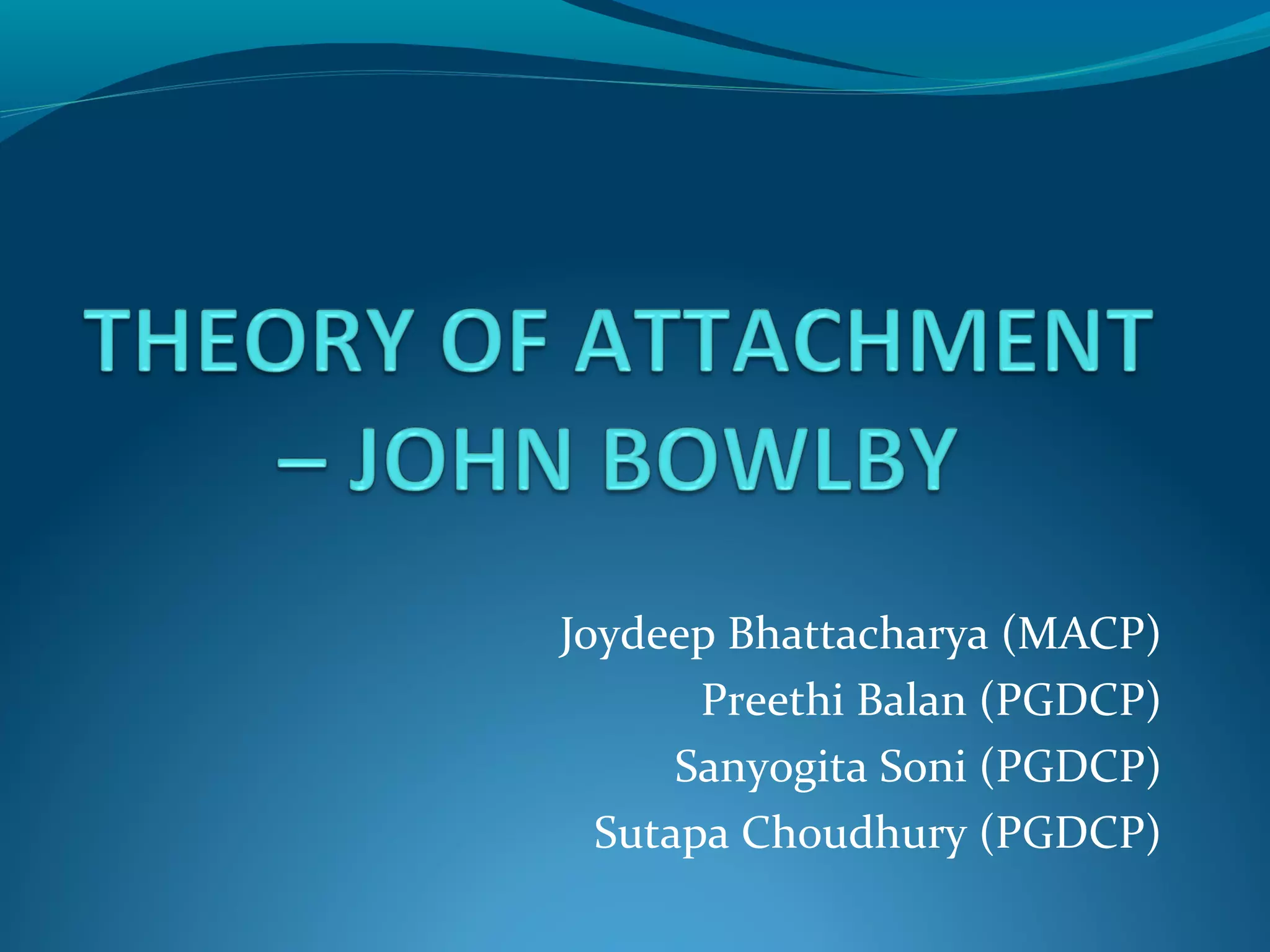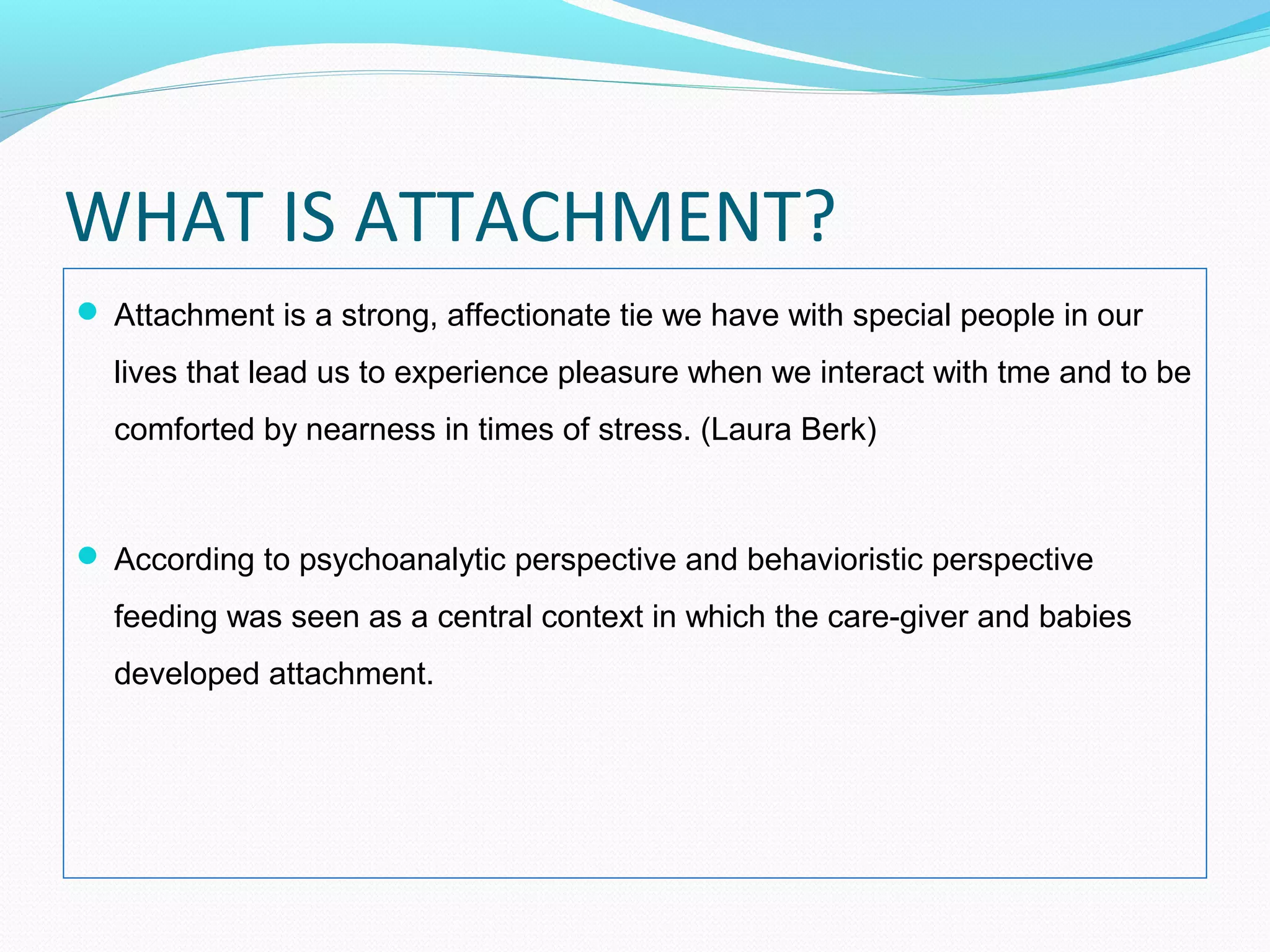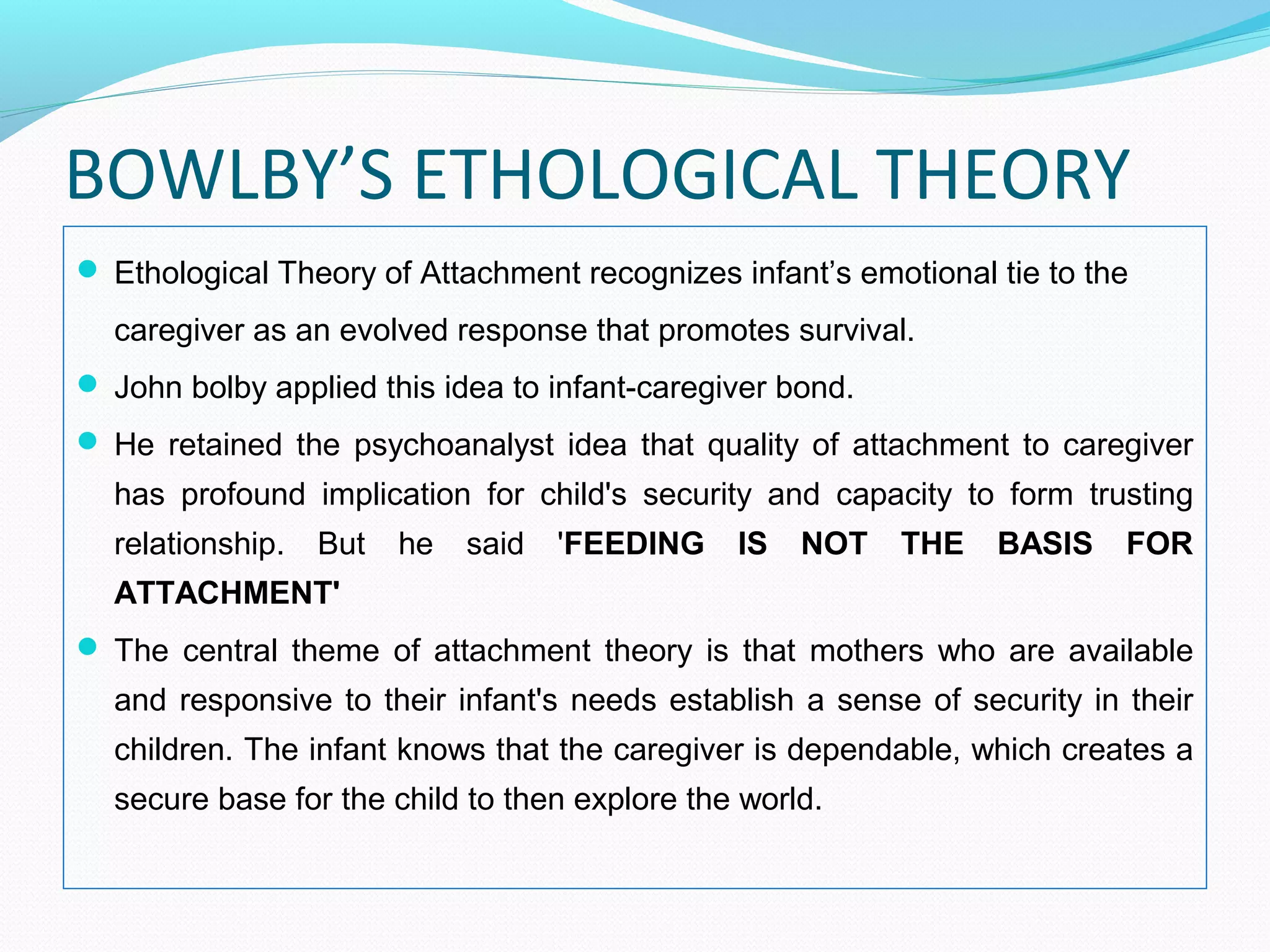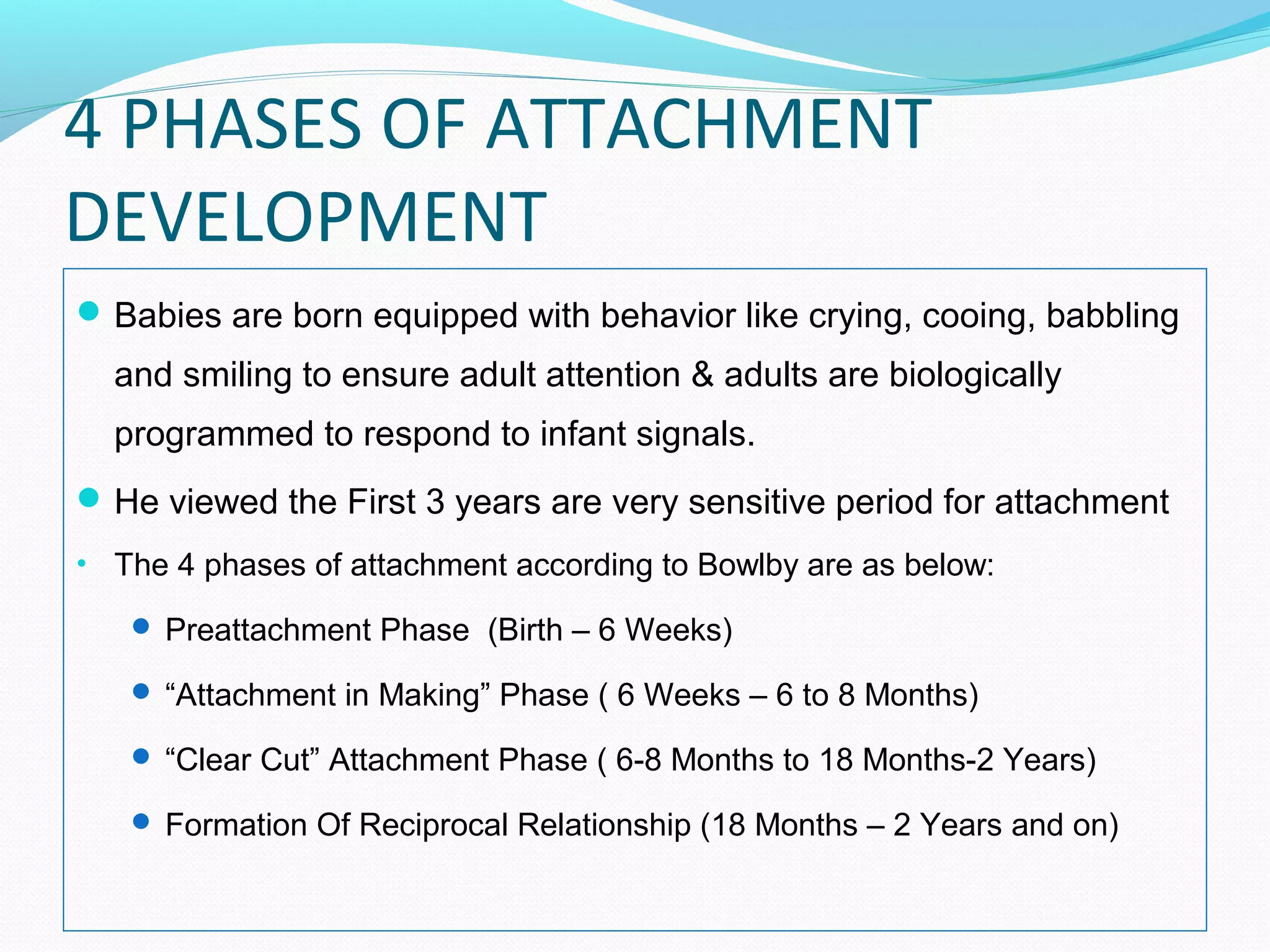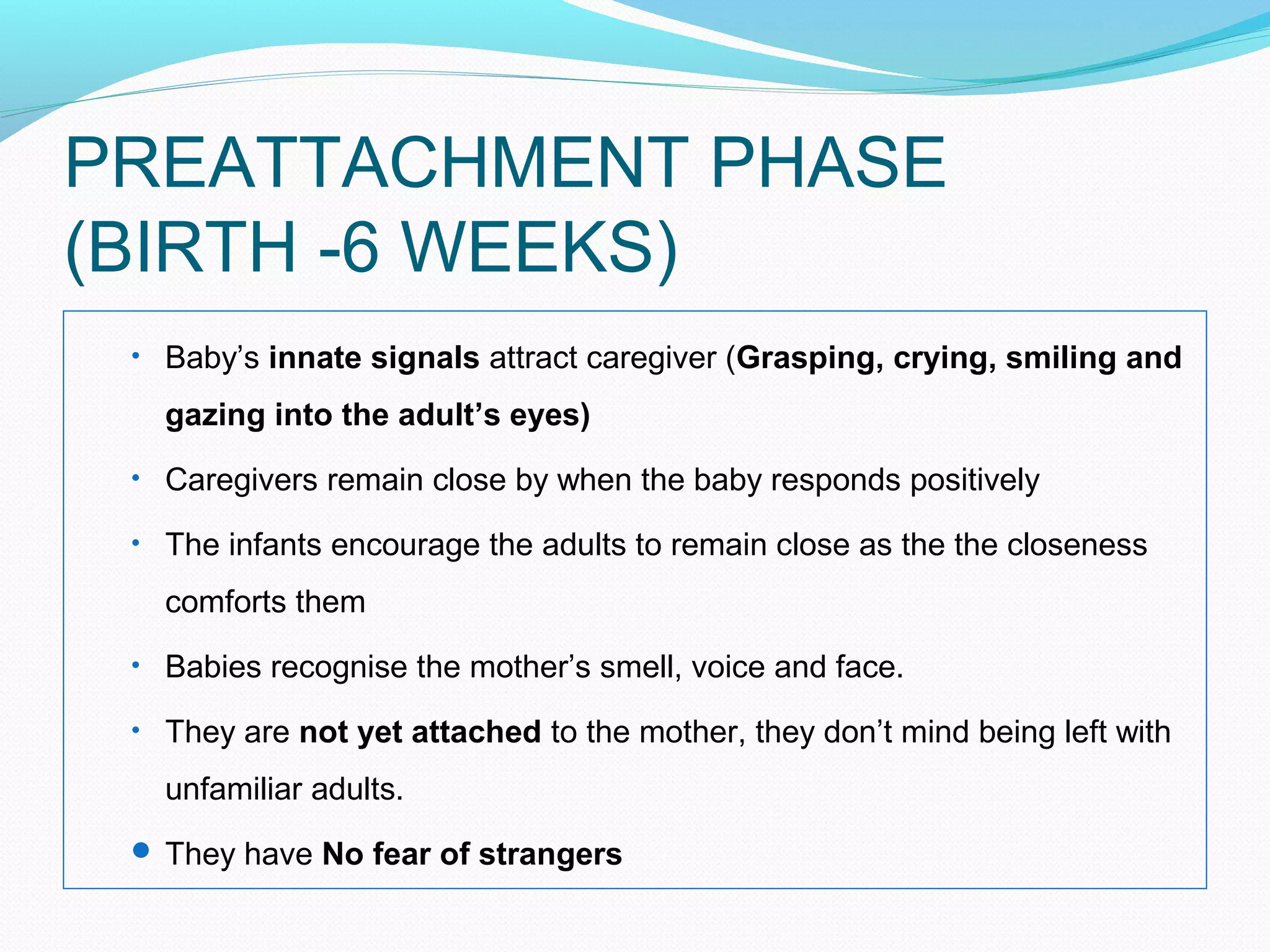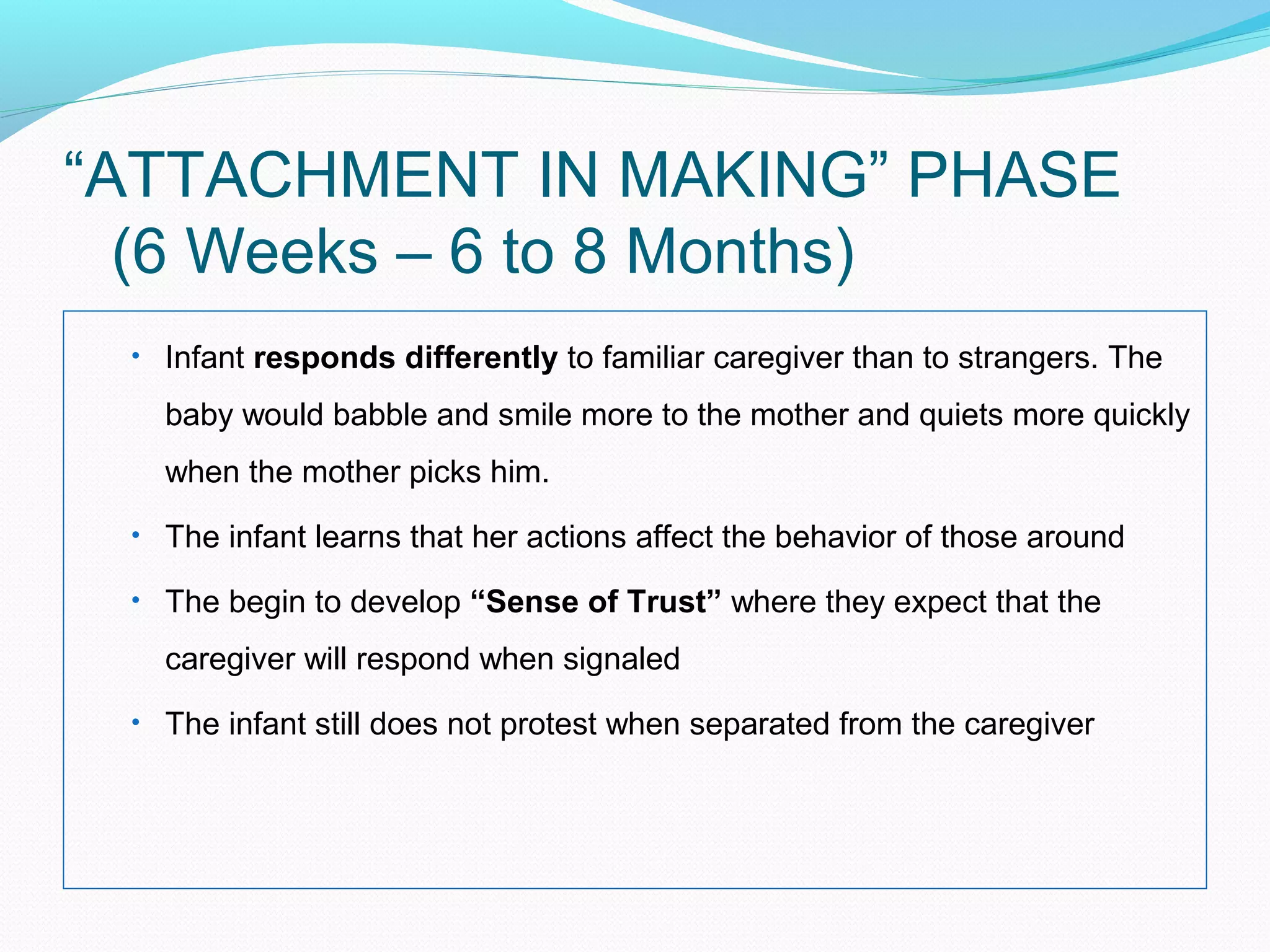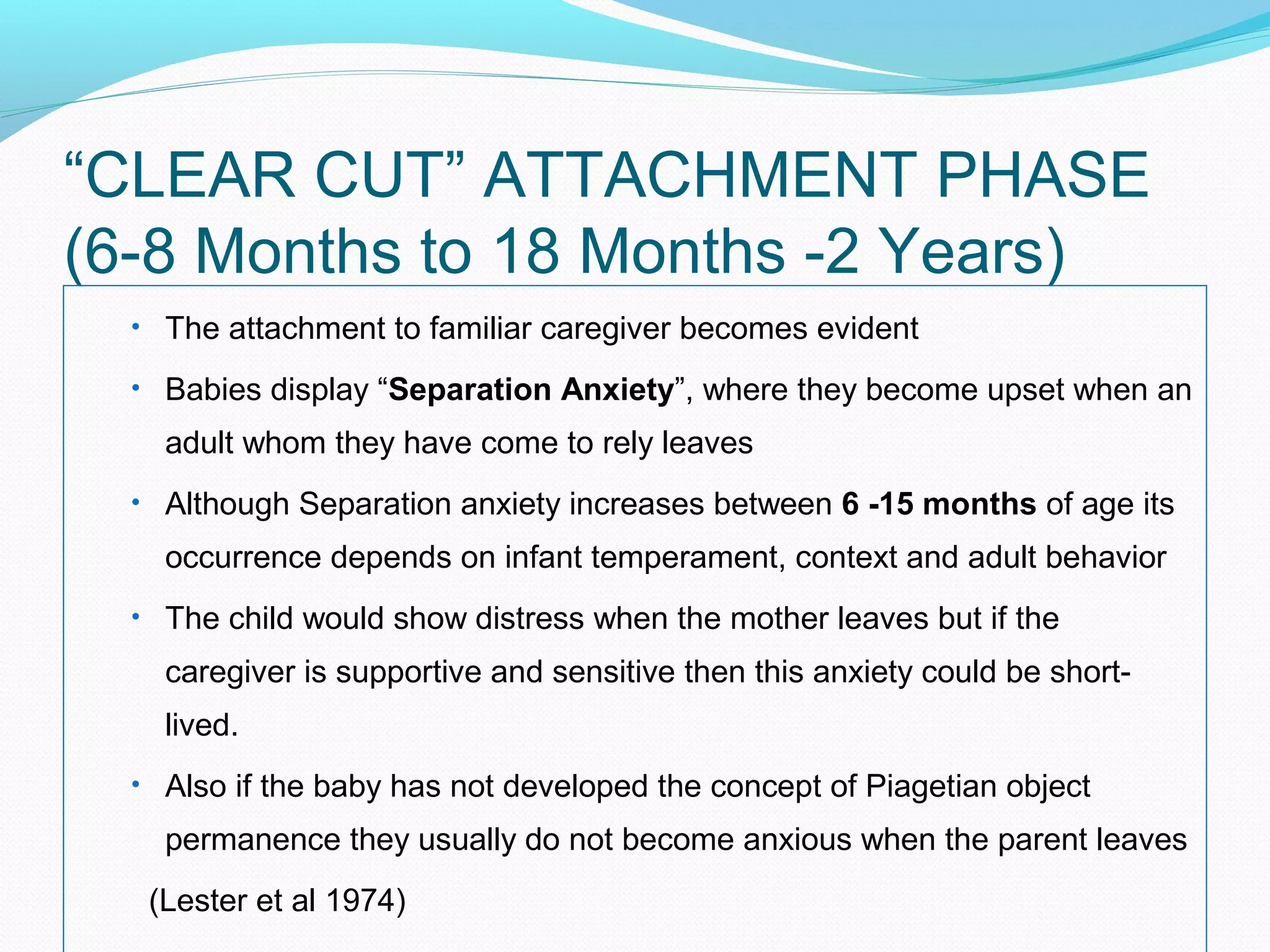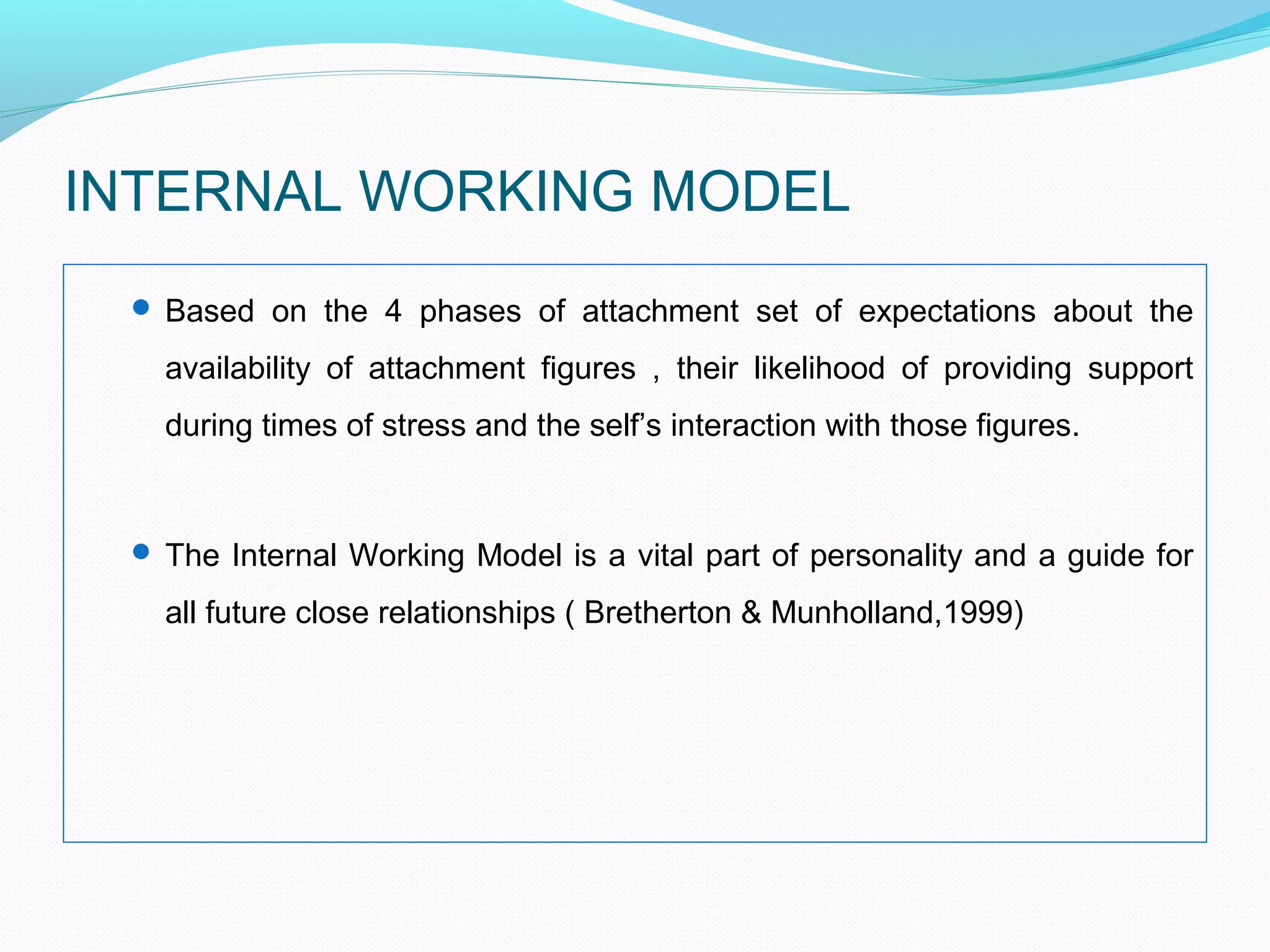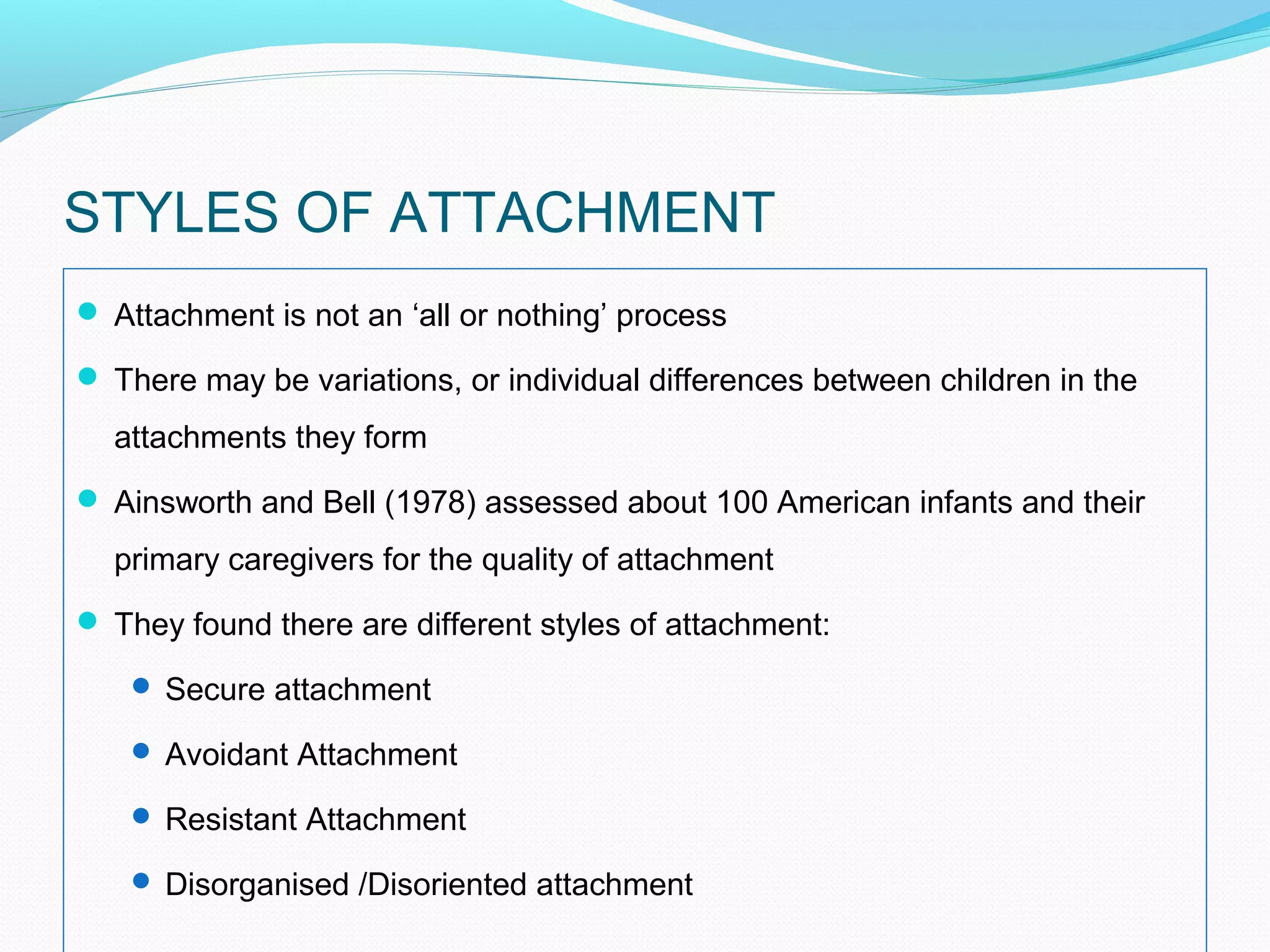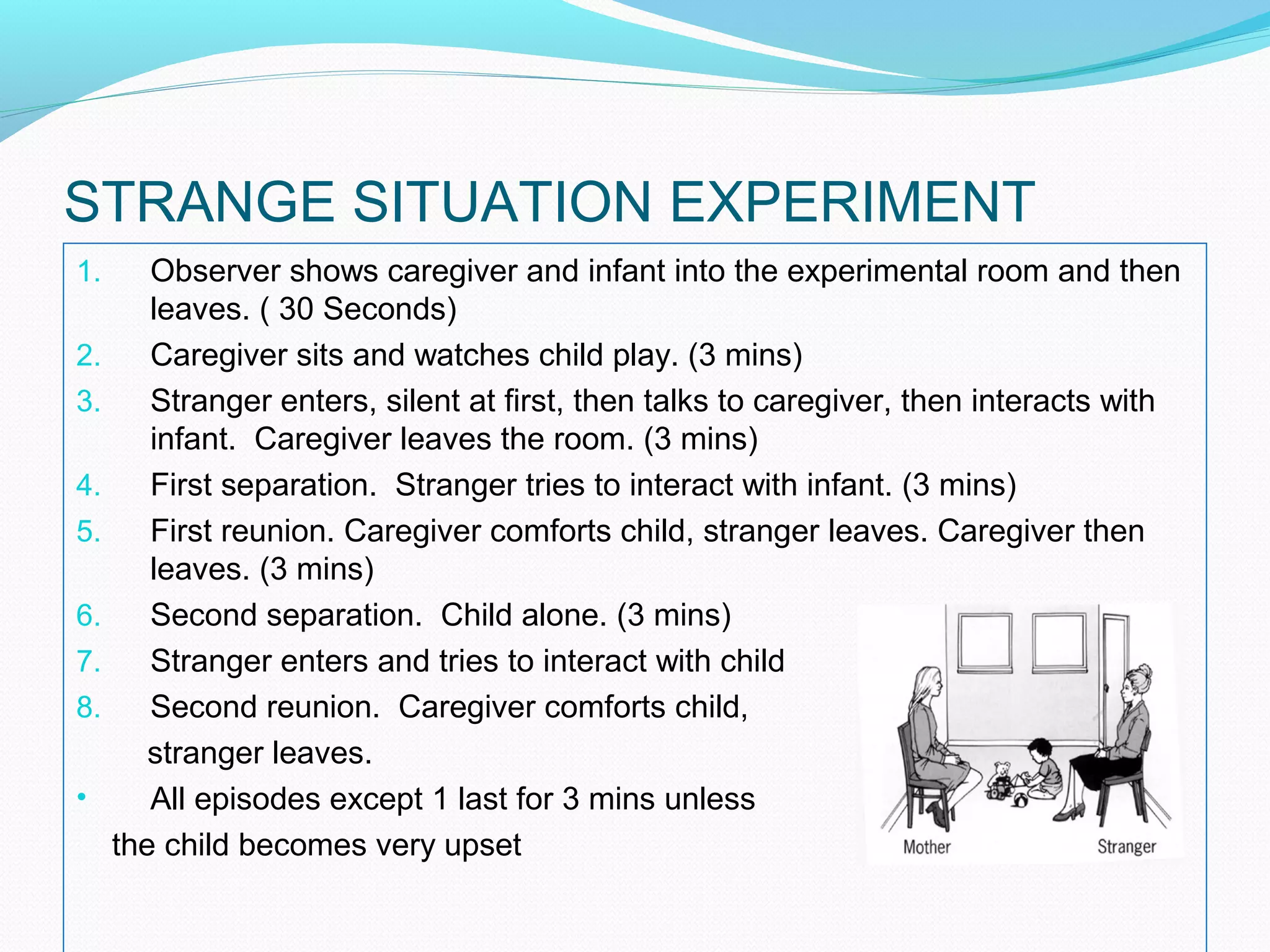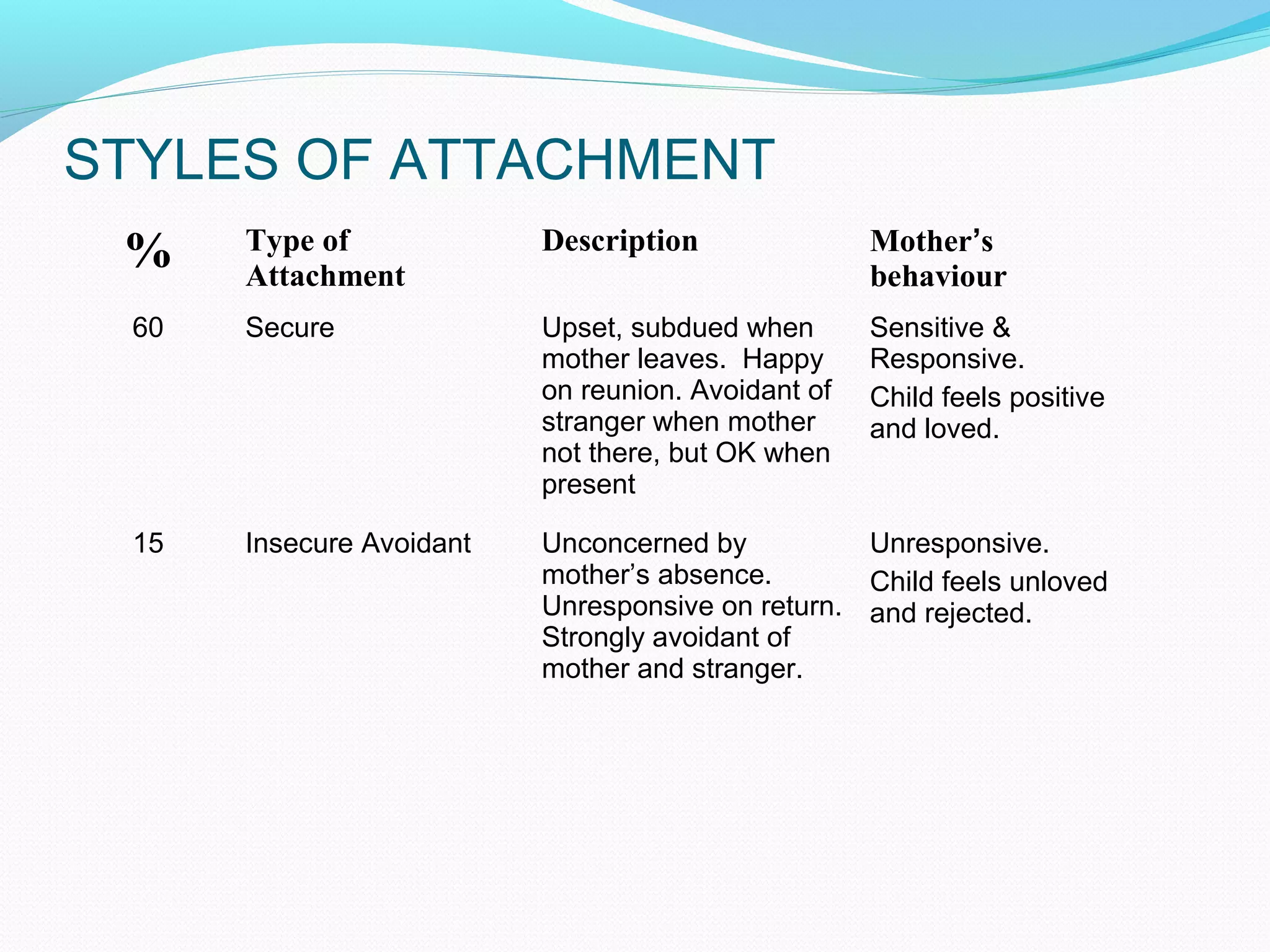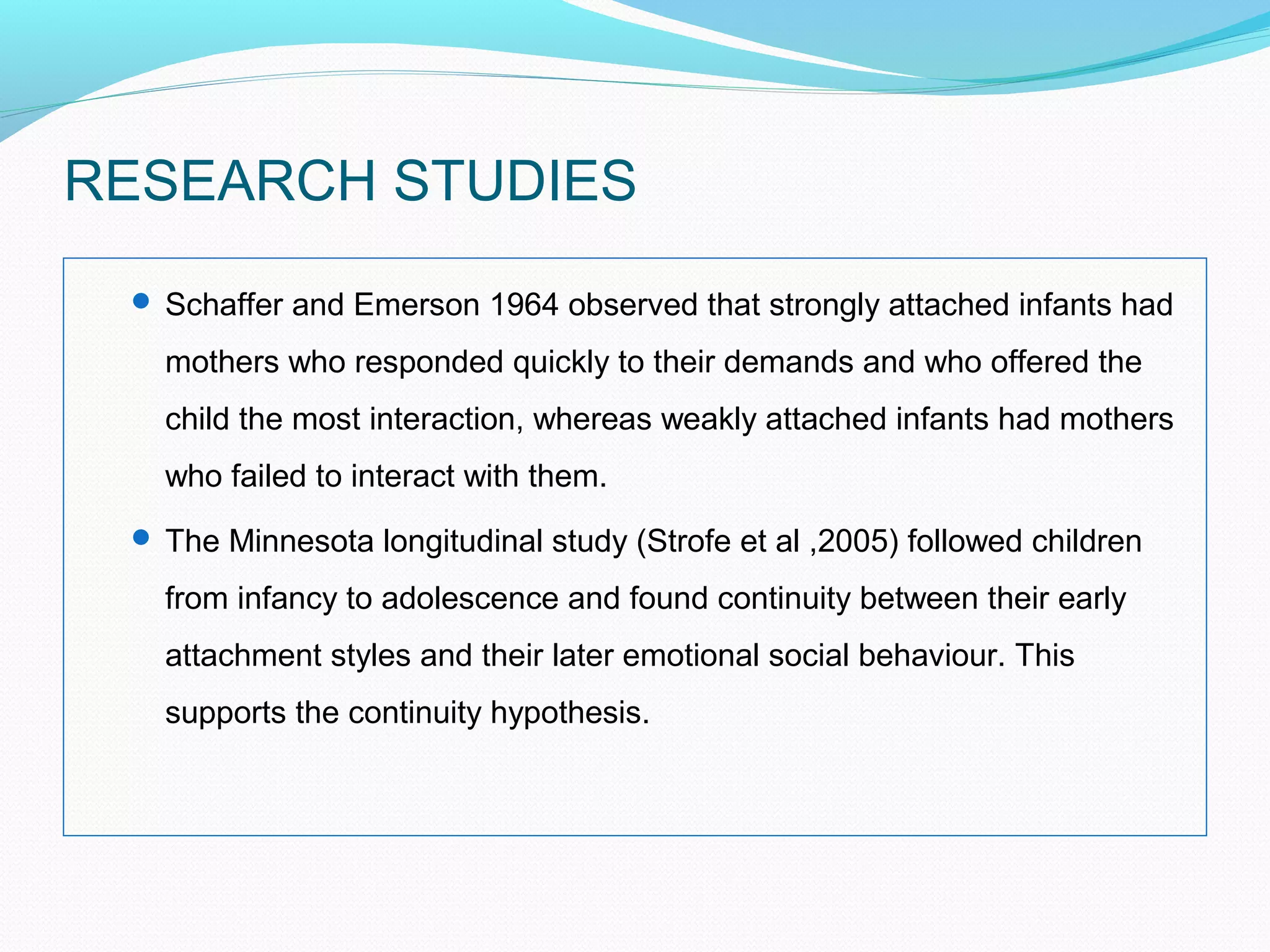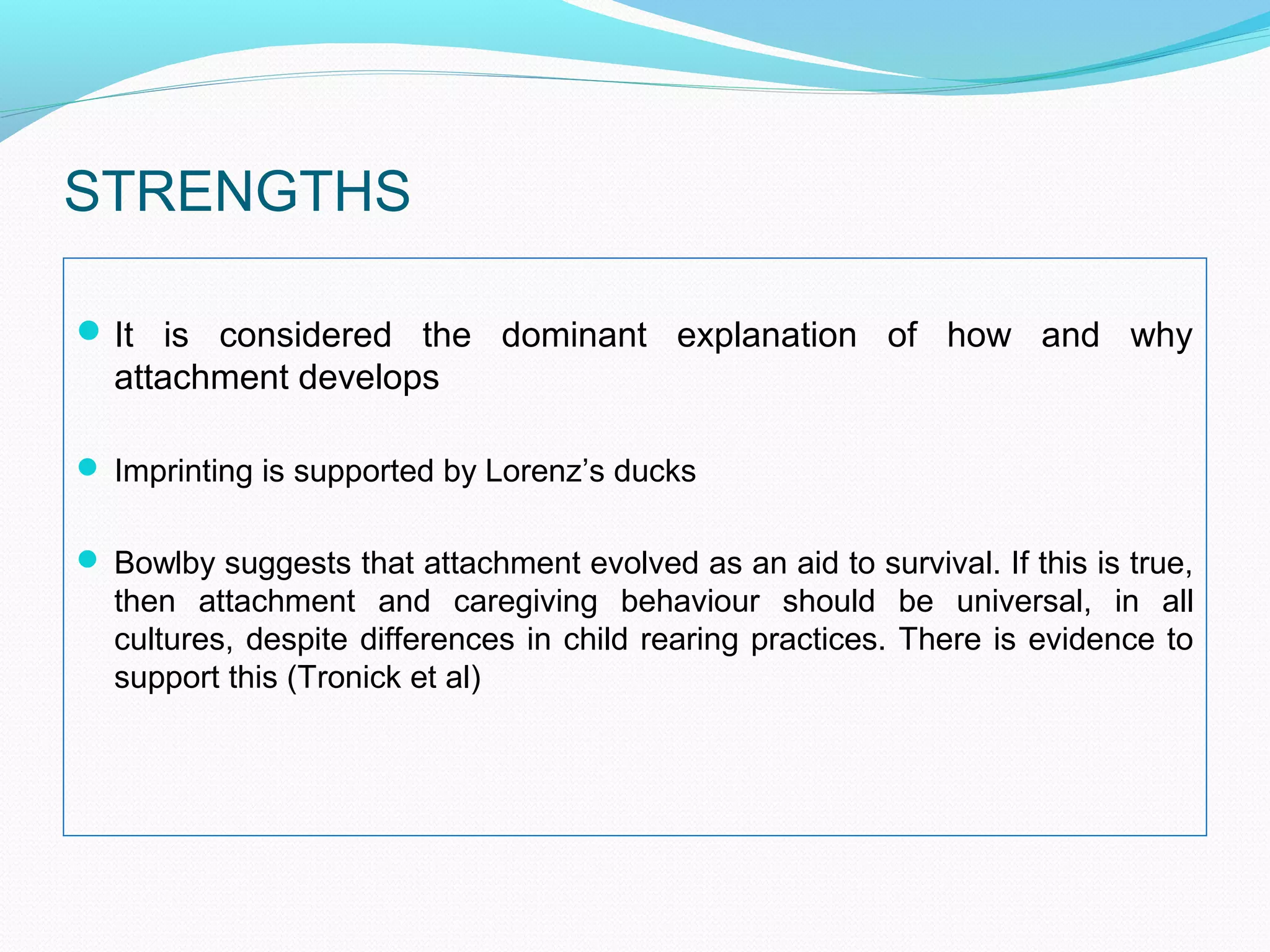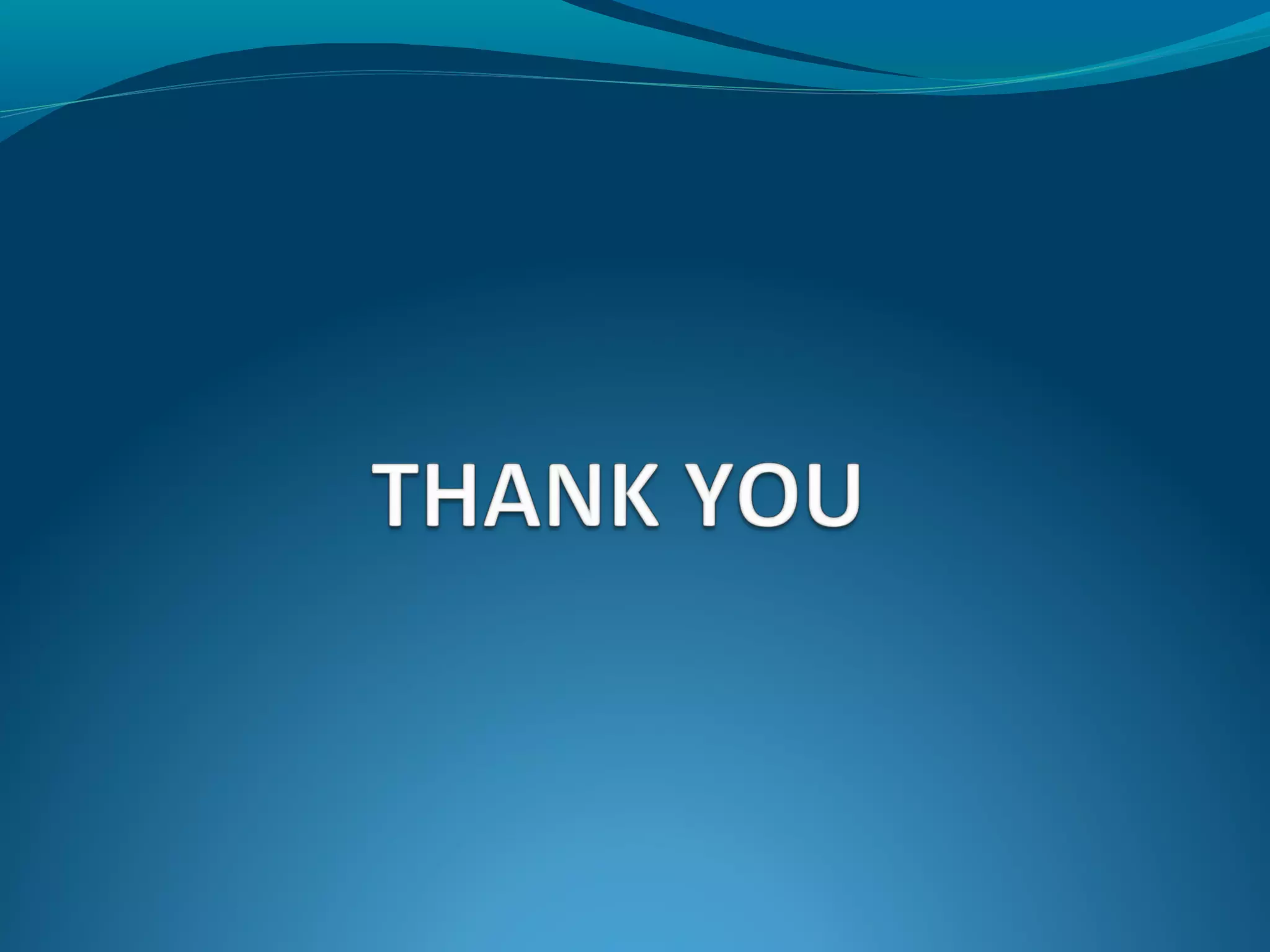- John Bowlby was a British psychiatrist who developed the theory of attachment, which proposes that the bonds formed between children and their caregivers have a significant impact that lasts throughout life.
- Key aspects of attachment theory include the four phases of attachment development from birth to 2 years old, the concept of an internal working model, and different styles of attachment identified in Ainsworth's Strange Situation experiments, including secure, avoidant, resistant, and disorganized attachment styles.
- Attachment theory has influenced research showing relationships between early attachment and later social/emotional development, as well as the importance of caregiver sensitivity and responsiveness in forming secure attachment. However, critics note it focuses primarily on the mother's role and evolutionary
